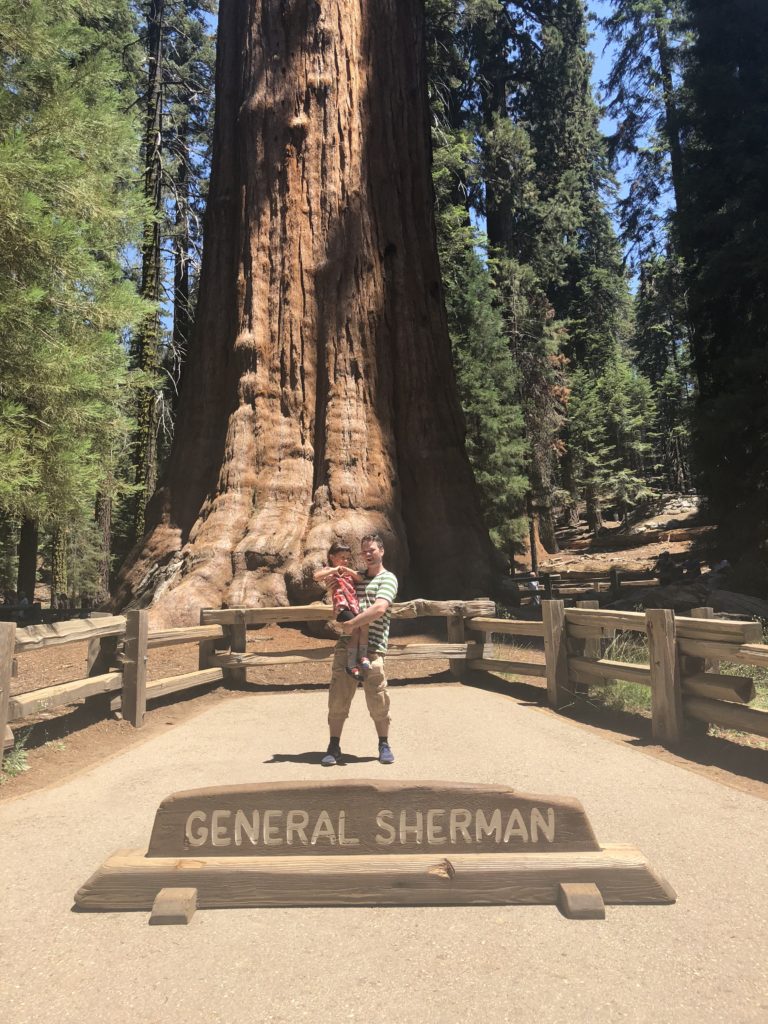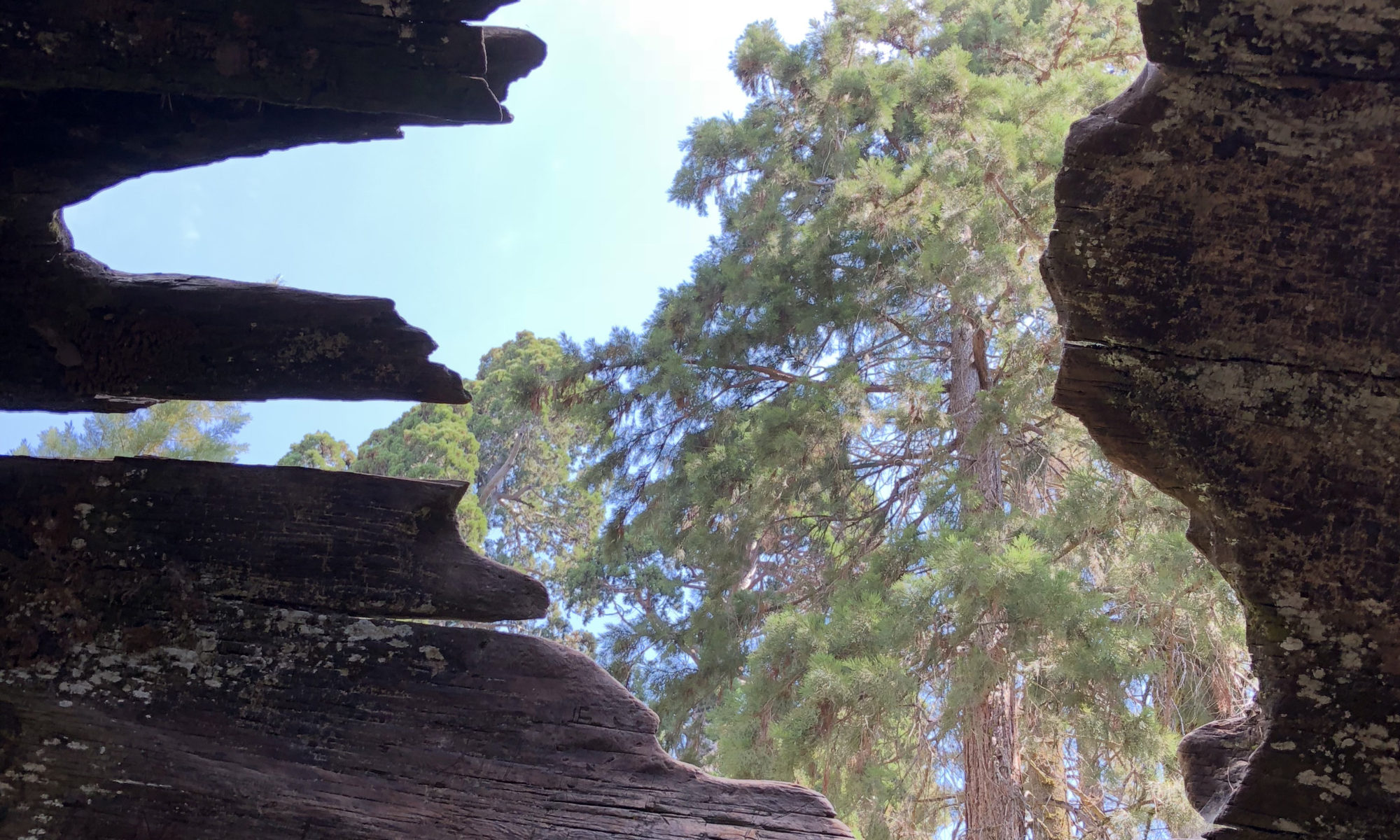
I recently visited Sequoia and Kings Canyon National Parks in California. I have been fascinated with forests since reading The Hidden Life of Trees , which illuminates the intricate complexity of these ecosystems.
Sequoia is one of the oldest parks in the country and home to the giant trees that have made it famous. Sequoias are the largest organisms in the world and only grow on the western slopes of the Sierra Nevada Mountains at elevations above 4000 ft.
Among these giants, the General Sherman Tree is the king in terms of volume, though not height, and over 2000 years old. It is shocking to think of a living thing so old that it may have been born around the same time as Socrates.
The General Sherman gets all the attention, but it is surrounded by hundreds of other gigantic sequoias in every direction of comparable age and stature, many of them even older than the Sherman.
The stunning success of these trees can be boiled down to one key point – they excel at defense.
There are three main killers of trees – insects, fungi and fire. The sequoias and closely related redwoods have high levels of tannin, which is toxic to both insects and fungi, so these rarely pose a threat. Meanwhile, the bark is extremely fire-resistant, and often compared to asbestos for its tough, fiber-like structure. Older trees, including the rival General Grant Tree, often display large black scars from fires that raged hundreds of years ago, but were unable to destroy the tree.
When a large fire occurs, it tends to wipe out most other vegetation in the forest, along with some younger sequoia trees that lack bark thick enough to withstand the assault. For the older trees though, besides some burn scars, they tend to survive largely intact.
In the post-fire environment, the patience of Sequoia trees really pays off, as the newly cleared forest ground and canopy provide ample room for growth.
Indeed, a sequoia tree that has grown up in the shade of other trees might spend 300 years waiting for such an opportunity, amassing a diameter of less than a meter, while many other species of trees can achieve that size in 1/10th of the time. Sequoias don’t grow fast, but by virtue of outlasting all other competitors, they manage to become the biggest.
Similarly, the ancient Yakusugi trees native to Japan can survive for thousands of years because they grow extremely slowly and produce large amounts of resin, which wards off insects and heals the damage caused by fungi. Slow growth results in very small, dense cells, which provides protection against wind, rain and other natural threats.
This strategy of constantly playing defense, ensuring survival in periods of crisis, and taking advantage of the opportunity this creates, has paid off handsomely for the sequoias. It is a playbook worth emulating in investing as well.
Our patience can hardly match the sequoias, but we do try to invest on a multi-generational basis at Varecs. We love to partner with companies that are structured to ride out cycles and crashes, and come out the other side stronger.
Just as there are a few lethal threats to trees, a few major factors can kill a company. Primary among these are failing to make products that customers value, internal rot and, most importantly, running out of money.
Every company needs to change and adapt over time as the demands of customers change. Japan is home to 3000+ companies over 200 years old, more than any other country. There are only 15 companies globally that reach sequoia levels of longevity of more than 1000 years old, and 8 of these are Japanese. Each of the 15 produces something with more or less timeless demand – hotels, alcohol, construction, and religious goods.
Kongo Gumi is the world’s oldest known company, with a founding estimated around 578 AD. The company makes temples, a business with steady, but not growing, demand. Because temples are made of wood and Japan is historically prone to fires and termites, they tend to be rebuilt once a generation. The traditional method is to learn how a temple was built during the deconstruction process, and use that knowledge to produce a replica. Sadly, traditional Japanese construction methods that used wood joining without nails (kigumi) is becoming a lost art.
While Kongo Gumi operates in a niche with lasting demand, and took a flexible attitude toward succession to keep the company together, they in fact succumbed to the third cardinal sin of longevity, running out of money. Debt is the easiest way to run out of money because you have to keep servicing it even during hard times. Kongo Gumi was sucked up like so many others by the land mania of 1980’s Japan and critically injured by the crash. The company was saddled with hundreds of millions in debt for assets that were falling in value, while temple construction demand entered a long decline in the 1990s. Takamatsu Construction took over the company in 2006 and has nursed it back to health, but the lesson remains that the ability to survive occasional disasters is a prerequisite for longevity. We rarely invest in companies with significant net debt positions, even though aggressive use of the balance sheet can often super-charge short-term returns. The really big returns often come from being the last survivor in the field.

